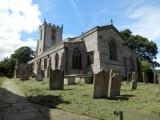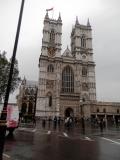 Good news. There will be various services at Leicester Cathedral to commemorate Richard III during THAT week in March 2015. About a week ago, members of the Richard III Society received their ballot papers to try and get one of the sought-after seats for one of the services.
Good news. There will be various services at Leicester Cathedral to commemorate Richard III during THAT week in March 2015. About a week ago, members of the Richard III Society received their ballot papers to try and get one of the sought-after seats for one of the services.
Yesterday Leicester Cathedral announced that it will be making 200 seats available for members of the general public, representing one third of all the seating in the Cathedral. This will include the following services:
- Sunday, 22 March (6.00pm) – evening service of Compline, at which the Catholic Archbishop of Westminster, Cardinal Vincent Nichols, will preach the sermon
- Thursday, 26 March (11.30am) – the reburial, culminating in the lowering of the coffin below ground into the specially designed tomb
- Friday, 27 March (12.00 noon) – Richard III’s tomb will be revealed
This ballot offers another chance to win a ticket for one of the services. As this ballot is open to the public, it does not include the special service for members of the Richard III Society on Monday, 23 March (7.00pm).
As Revd. Pete Hobson, Canon Missioner and Project Manager, explained on Facebook, “anyone can enter the ballot, for one, two or all three services, but each person will only be selected once and we can’t guarantee for which service if you out in for more than one”. They will also coordinate the allocation of tickets from their ballot with that of the Richard III Society, so that no one gets “double invites”, thus allowing as many people as possible to have a chance to attend one of the services.
Revd. Pete also mentioned that they hope to open the Cathedral to the public by mid-afternoon on Friday, 27 March, to pay their respects at the tomb.
The ballot will open on Friday 12th December, 100 days before the week of events, at 8.00 am (UK time), which is 5.00pm AEST, and close at midday (9.00pm AEST) on 31 December. The lucky ones who will be invited, wll be notified by letter, which are expected to be sent out in the week beginning 12 January. This is the same week, when the Richard III Society will notify those members, who were successful in being chosen.
To find out more about the ballot, visit the website of the Diocese of Leicester (this includes a link to the ballot):
http://www.leicester.anglican.org/news/details/public-ballot-for-king-richard-lll-services
More about the services:
http://www.leicestercathedralkingrichardiii.org/plans/
Tags: Church, Leicester, Richard III
 Geoffrey of Monmouth was elected to the see of St Asaph in Wales on 24 February 1151. It is assumed that he was born between 1100 and 1110, and died between 25 December 1154 and 24 December 1155.
Geoffrey of Monmouth was elected to the see of St Asaph in Wales on 24 February 1151. It is assumed that he was born between 1100 and 1110, and died between 25 December 1154 and 24 December 1155.







